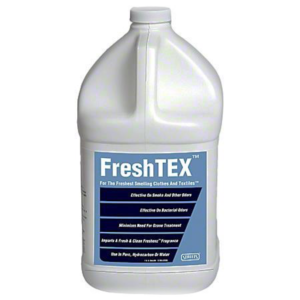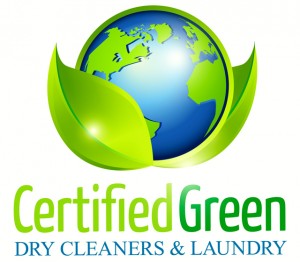General Care Tips for Clothing and Household Items
Blot That Spot
If you spill something on a garment, always Blot That Spot, and do not rub . Rubbing some fabrics, especially silk, breaks the surface fibers. You won’t know it until you wash or dry clean that item, and find you have a frosted or a chalky appearance.
Wine and Age = Good – Stains and Age = BAD
Age is your enemy with successful stain removal. A coffee stain that happens today will come out much easier tomorrow than it will next week or next month. The longer you wait, the greater the chance that the stain will be permanently set in the fabric. Also, some stains can break down cotton, linen, and silk fibers, causing thinning and holes in the fabric.
Knit Hanger Humps
We’ve all seen people walking down the street with hanger humps on their shoulders – don’t let it happen to you! Knit garments should be folded and placed over the bar of the hanger, not hung from the shoulders. The weight of the fabric pulls the material down, which causes hanger humps and can stretch heavier knits out of shape.
Bad Acid! Bad Bleach!
Many household cleaning products contain bleach, ammonia or mild acids, which will cause color loss on clothing. If they are left in the clothes for a few days, thinning and fabric damage may develop.
The Outfit That Stays Together. . . . .
We all have suits and matching outfits that we love, but may not always wear together. Sometimes you wear the skirt or pants with a different blouse, or the jacket with your favorite jeans and a fitted blouse or even a dress. Even though you don’t wear them together, you should always wash or dry clean matching pieces together to make certain that a slight color loss doesn’t give you two pieces that almost match.
Reflections on Home Laundry
There are two schools of thought to home laundry; weekly / bi-weekly chore; or on an as needed basis. Regardless in which category you fall, you will probably be doing at least 3-5 loads of laundry depending on colors and the amount of clothes to be cleaned.
- Whites should be washed in hot water to maintain whiteness and maximize soil and stain removal.
- Lights should be washed in warm temperatures to maintain brightness and stain removal.
- Darks should be washed in cold water to minimize dye fading and color loss.
- Don’t overload the machine, which can cause white streaks and local abrasion because the clothes don’t move around freely.
- Use proper water levels, for maximum soil removal. If water levels are too low for the load, soils will not be rinsed out, and can cause general discoloration and staining.
- Use the right amount of detergent. Using more detergent than necessary does not get your clothes any cleaner.
Dry cleaning: “No Odor” is good!
You should always expect your garments to be returned to you cleaned, pressed, and ready to wear. If your clothes have been properly dry cleaned, there should be no smell or odor-and no need to air them out. If there is an odor, the most likely culprit is dirty solvent that’s left a smelly residue behind; in rare cases there may be a trace of solvent left in the garment. Either of these is unacceptable and you should take them back to your cleaner. If your cleaner can’t give you odor free garments, you need to find another cleaner.
Drapes Have an Attractive Personality
While drapes and curtains hang at the windows, they attract dust, cooking odors, and airborne particles. You should gently vacuum them every other month to prevent build-up. If the drapes get wet from rain at an open window or condensate on the windowpane, the moisture combined with the dust or smoke particles in the fabric can cause ugly water rings.
To Wash or Dry Clean: that is the question for drapes
Drapes are a big investment, and will require cleaning if you want to get long-term use from them.
- If washable, you may be able to do it yourself, preferably in a front-loading machine to prevent the long panels from wrapping around the agitator in a top loader. Air dry or tumble dry at low temperatures if recommended. Be sure to follow all care instructions -if there are none, you may want to have them cleaned professionally.
- If your drapes need to be dry cleaned, have them processed by a professional cleaner. Many offer take down service, where they will take the drapes down and re-hang them for you after cleaning.
- Some drapes are very difficult or impossible to remove from the window, such as drapes attached to wood frames or wall brackets. These may benefit from an on-site drapery cleaning process. Consult with your professional cleaner about this process.
To Wash or Dry clean: Comforters and Bedspreads
Regular cleaning will keep your bed linens fresh and looking their best.
- If washable, you can do it yourself, preferably in a large, front-loading machine to allow free movement and keep them from bunching up. Tumble dry in a large capacity machine, which will help fluff up the fiberfill or down filling material.
- If care instructions for the items recommend dry cleaning, take them to your professional drycleaner for proper handling.
- Some bed sets create a theme in the room, and include table covers, dust ruffles, decorative pillows, chair arm covers, and other accessories. To ensure that the items always match, they should always be cleaned at the same time. You may feel that this is not necessary, but after you clean your bedspread three or four times, and the matching table cover has not been cleaned, a variance in color or sheen will be noticeable.
To Wash or Dry clean: Napkins and Tablecloths
Table linens used for holidays and special occasions should be cleaned after each use. If they are put away without cleaning, stains can oxidize as they age, which can cause yellow, tan, or even brown stains in the area. Also, some stains can degrade cotton and linen fibers, which can cause holes.
If washing at home, do not treat stained areas with chlorine bleach, unless you plan to immediately wash the item. Local treatment with undiluted chlorine bleach can damage cotton and linen, and will cause holes.
Spray starch at home does produce a nice appearance to tablecloths and linens. However, it cannot match the crisp feel and appearance you get when you take your tablecloths to be professionally handled by a reputable drycleaner. Consider your professional cleaner the next time you are getting ready for a party or hosting a holiday event at your home.
Not Cleaning Before Storage? Tsk-Tsk!
Unless you have three or four empty closets in your home, you probably have to switch and store clothes with the changes of the season. Before putting clothes in storage, have them cleaned to remove stains first. This prevents stains from ageing and discoloring. Also, food and beverage stains, as well as body oils and perspiration are tasty treats for pesky insects that can attack clothes if not stored properly.
To minimize damage on garments and maximize their life, we suggest the following guidelines for long-term storage:
- Inspect and clean clothes before storing. If any need repairs, this is the time to have that done.
- Don’t store dirty clothes, the condition only gets worse with age and heat exposure.
- Use plastic storage containers appropriate for garment storage, and make sure they close tightly.
- If storing in bags, make sure you use bags that allow the clothes to breathe.
- Store in places that do not have not extreme changes in temperatures. Attics might be O.K. for storing some items in the winter, but not during the summer when the temperatures can go over 120F. Extreme heat can cause permanent yellowing and other damage.
- Don’t store garments in damp basements. Even with the best storage bags or containers, moisture can penetrate into the fibers, which can lead to mildew and objectionable odors.
Does ‘Machine Wash Delicate Cycle’ equal ‘Hand Wash’, or Shall the Twain Never Meet?
There is some risk involved in using any care process not recommended by the manufacturer. Hand washing uses a gentle squeezing action. A care label that calls for machine washing, in a delicate or gentle cycle, indicates the soil can be removed with slow agitation, and reduced time in a washing machine.
Hand washing minimizes the amount of agitation a garment receives in cleaning. If hand-washable garments are machine washed in a gentle cycle, agitation can be further reduced by putting the item in a net bag. Even this procedure is contrary to the care label instruction, however, and places responsibility for damage on whoever does the washing.
Would Martha Stewart Use Hairspray To Remove An Ink Stain?
Hairspray and water can remove ballpoint ink, but you may be trading one problem for another. That’s because hairspray may contain alcohol and oils such as resins and lanolin. The alcohol in the hairspray can cause color damage especially on silk; likewise, oils and other ingredients could lead to additional stains.
To Sweat or Not to Sweat, That is the Question
Most people don’t realize that prolonged contact with deodorants and antiperspirants may cause permanent damage. Combined with the effects of perspiration, the damage can be extensive. The most frequent damage comes from overuse of these products, or infrequent cleanings. This leads to the buildup of a stiff, caked-up residue or to fabric damage.
To prevent chemical damage, do not overuse the product and allow it to dry before dressing. Wear dress shields with silk garments.
To remove the residue on washable garments, wash as soon as possible after wear in the hottest water safe for the fabric. Soaking in a detergent containing enzymes or an enzyme presoak may be necessary. If the stain remains, try using three percent hydrogen peroxide or chlorine bleach, according to fiber type or care label instructions. Before using, test for colorfastness.
Does Dry cleaning Shorten the Life of Garments?
Nope, quite the contrary, – frequent cleaning prolongs the life of a garment. Not only do stains set with age, making the garment unwearable, but ground-in dirt and soil can act as an abrasive, causing rapid wear of fibers. Also, insects are attracted to soiled clothes (particularly to food or drink stains) and will eat holes in the fabric.
That said, you should be aware of one part of the clothes care process which can cause an appearance change, particularly with fabrics such as wool gabardines. Over-pressing can cause a flattened appearance, to the point of having a glazed, shiny appearance on gabardines. This usually results from not changing foam pads on presses frequently enough.
Whaddya Mean? There Were Crayons in Your Pockets?
Crayon stains appear as built up, shiny and stiff stains in a variety of colors. Normally, drying–not washing–will cause these kinds of stains.
Your first discovery of the stains will occur when you open the dryer door to find otherwise clean clothes covered with a myriad of colored stains. The stains appear after drying because the heat from the drying melts the crayon material.
The easiest way to solve this problem is to take the garments to your drycleaner, who usually can remove them by running the garments through a dry cleaning machine. If any of the stains remain after cleaning, they can generally be removed by your drycleaner through traditional stain removal procedures.





